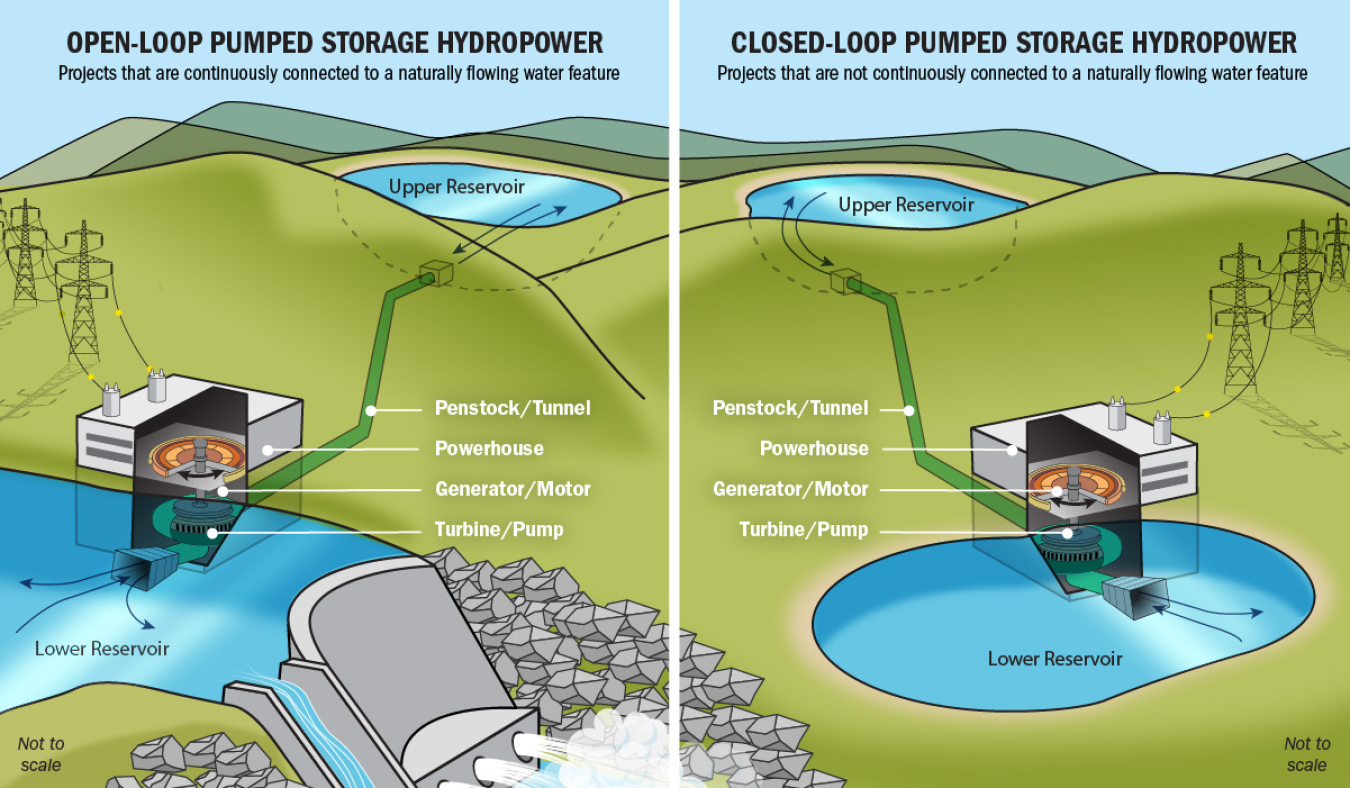Quidnet Energy is taking an alternative approach to conventional pumped-storage hydropower development.
Water Power Technologies Office
June 7, 2019Unprecedented rates of variable renewable technologies like wind and solar energy are currently being deployed throughout the U.S. electric system, underscoring the need for innovations in complimentary energy storage services for the grid. While pumped-storage hydropower (PSH) provides 95% of utility-scale energy storage in the United States, long lead times, high capital costs, and site selection difficulties have hampered new project deployments. However, Houston-based Quidnet Energy is taking an alternative approach to conventional PSH development.
As profiled in a recent blog post by Bill Gates, co-founder of Microsoft, Quidnet is investing in an innovative geo-mechanical pumped-storage (GPS) system, where wells and other underground man-made or naturally occurring features are adapted for energy storage applications. Their system uses the pressure in underground wells to generate electricity, and is unique in its ability to be installed in flat areas—eliminating typical PSH geographical challenges in finding high and low elevations in close proximity.
In April, the Office of Energy Efficiency and Renewable Energy’s Water Power Technologies Office, recently announced awards for innovative standard modular hydropower and PSH concepts, that includes Quidnet as an awardee. As part of these awards, Quidnet will further design and model its bi-directional Injector-Generator (INGEN) system, which could reduce capital expenditures and achieve a mechanical efficiency of 95% over conventional PSH designs. Operating similar to a reversible pumped storage turbine, INGEN can store or generate electricity through pumping or release of pressurized water. If successful, the technology has the potential to enable the development of pumped storage in areas where projects were not feasible before. Quident is also the recipient of funding from the Bill Gates-backed Breakthrough Energy Ventures, a clean energy venture fund that has identified energy storage as a main priority for investment.
Hydropower and pumped storage are key components to strengthening the American economy and energy security. WPTO is committed to lowering the cost and build time of hydropower and pumped storage systems while reducing environmental impacts and permitting timelines, further increasing their ability to provide essential flexibility and reliability services our grid needs now and in the future.

Pumped-storage hydropower (PSH) is a type of hydroelectric energy storage. It is a configuration of two water reservoirs at different elevations that can generate power (discharge) as water moves down through a turbine; this draws power as it pumps water (recharge) to the upper reservoir.
PSH capabilities can be characterized as open loop—where there is an ongoing hydrologic connection to a natural body of water—or closed loop, where the reservoirs are not connected to an outside body of water.
The U.S. Department of Energy’s Wind and Water Power Technologies Office has led a first-of-its-kind comprehensive analysis, Hydropower Vision, to evaluate future pathways of low-carbon, renewable hydropower (hydropower generation and PSH) in the United States, focused on continued technical evolution, increased energy market value, and environmental sustainability.
Learn more about WPTO’s past, present, and future work with PSH.

